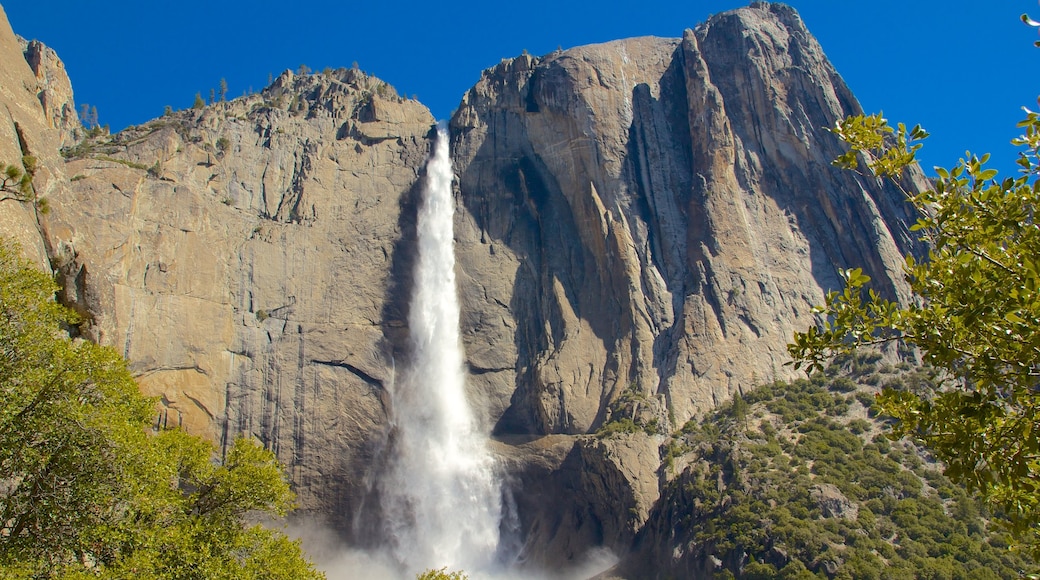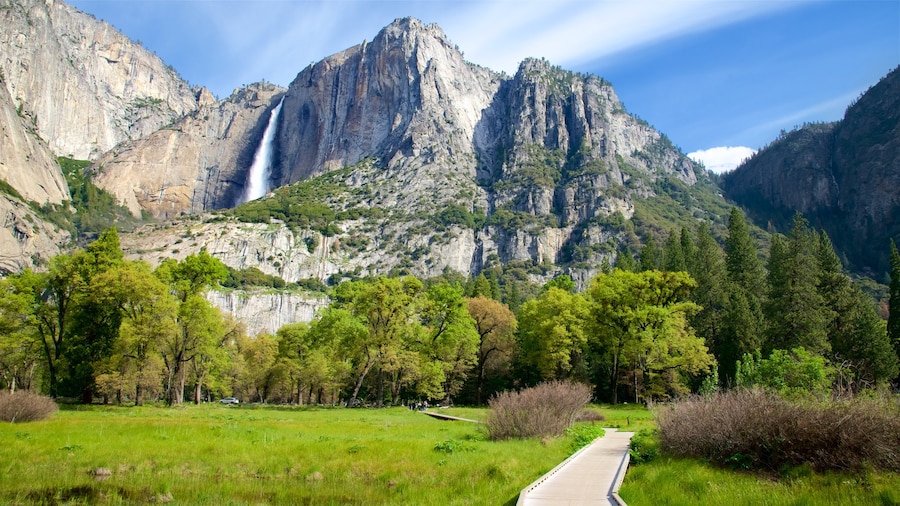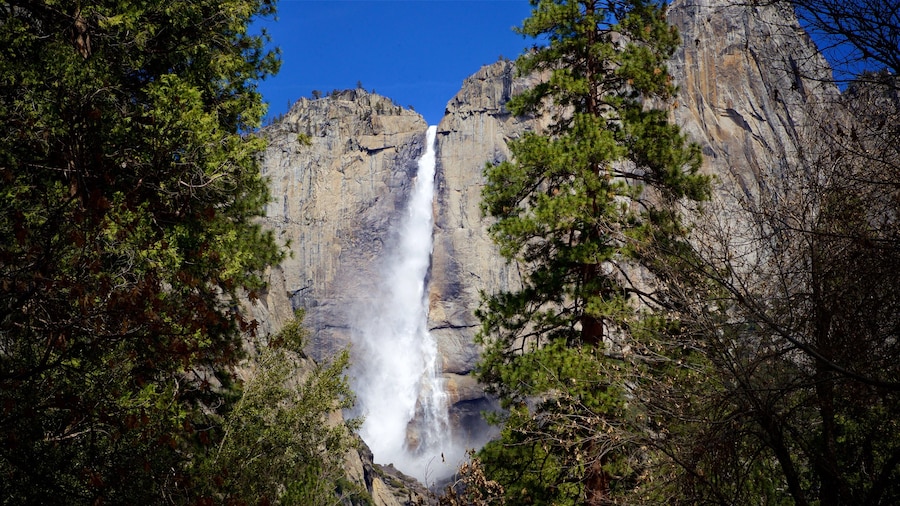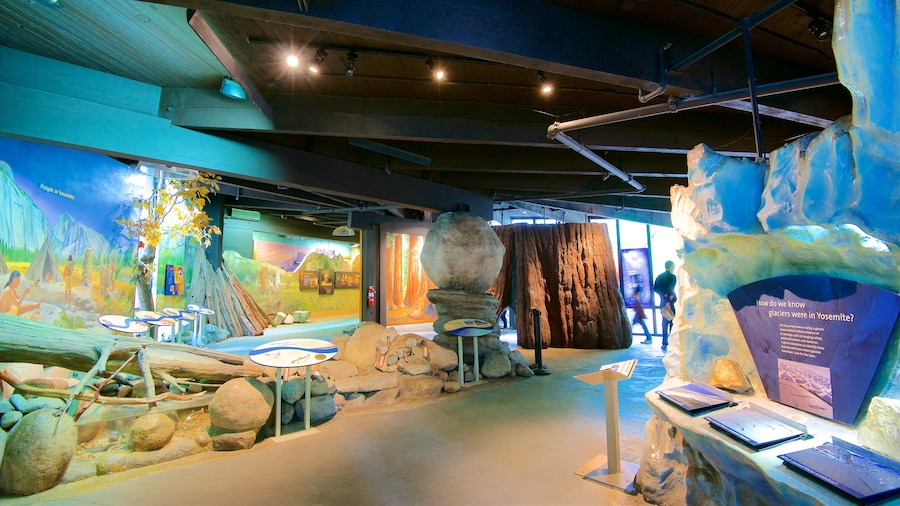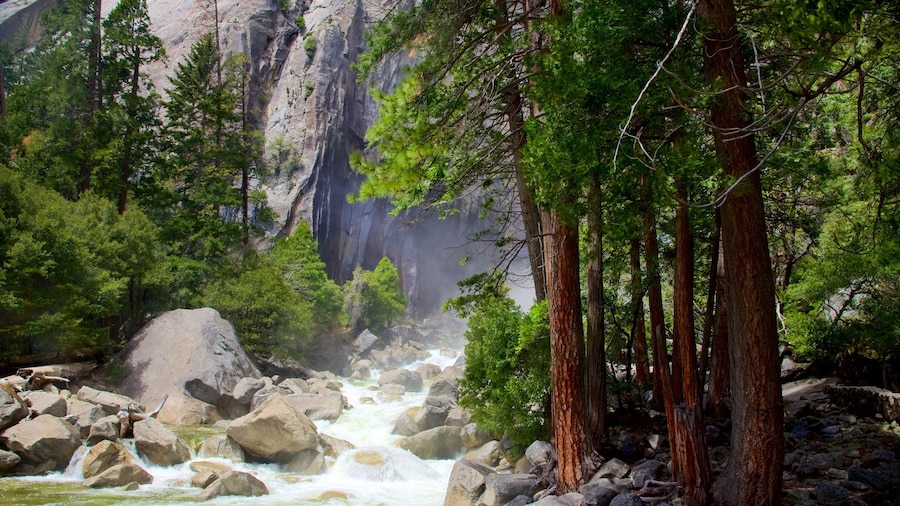Yosemite Valley is the emerald green heart of Yosemite National Park. Marvel at the soaring granite walls, including some of the park’s most iconic landmarks, flanking this 8-mile (13-kilometer) canyon.
Just about everywhere you turn in Yosemite Valley, you’ll see a thundering waterfall cascading from a clifftop above. The most visited is Yosemite Falls, which is the largest waterfall in North America. Other notable ones include Sentinel Fall, Bridalveil Fall and Nevada Fall. In February, don’t miss Horsetail Fall, which famously appears as if it is on fire when it reflects the sunset.
For a close look at one of the world’s most recognizable rock faces, bring your picnic blanket to El Capitan Meadow. El Capitan, a favorite destination for rock climbers and cliff jumpers, towers above you. This is located along the one-way Northside Drive, so you should stop here on your way out of Yosemite Valley.
Half Dome is an iconic symbol of Yosemite, recognizable in Ansel Adams photographs. Although its face is best left to experienced climbers, hardy hikers can reach its summit along a 15-mile (24 kilometer) loop trail that begins in Yosemite Valley. You can do the climb in a day or to make the experience more relaxed, stay overnight in one of the campsites along the trail. If you’d rather settle for a great vantage point of the vertical face, visit Sentinel Bridge, where you can see Half Dome reflected in the Merced River.
Get your camera out at Tunnel View, which provides one of the best vistas in Yosemite National Park. Stop at the east end of the Wawona Tunnel and enjoy the panoramic view of El Capitan and Bridalveil Fall with Half Dome towering in the background.
Driving through Yosemite Valley is allowed throughout the year. During busy periods, avoid traffic congestion and take advantage of the valley’s free shuttle service. With year-round service in eastern Yosemite Valley and summer service as far west as El Capitan, this is an effortless way to see the area’s major attractions.
